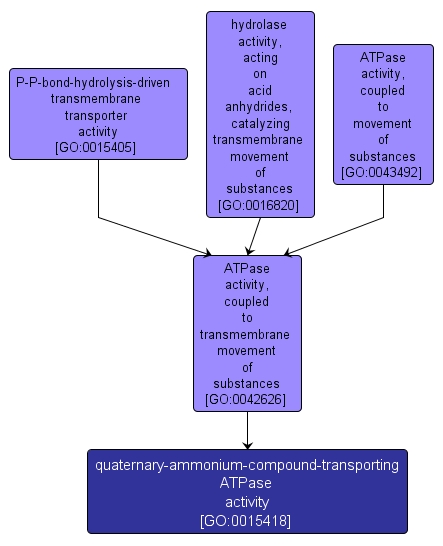GO TERM SUMMARY
|
| Name: |
quaternary-ammonium-compound-transporting ATPase activity |
| Acc: |
GO:0015418 |
| Aspect: |
Molecular Function |
| Desc: |
Catalysis of the reaction: ATP + H2O + quaternary amine(out) = ADP + phosphate + quaternary amine(in). |
Synonyms:
- glycine betaine/proline porter activity
- quaternary-amine-transporting ATPase activity
- ATP phosphohydrolase (quaternary-amine-importing) activity
- quaternary-ammonium-compound ABC transporter
- quaternary amine uptake transporter activity
|














